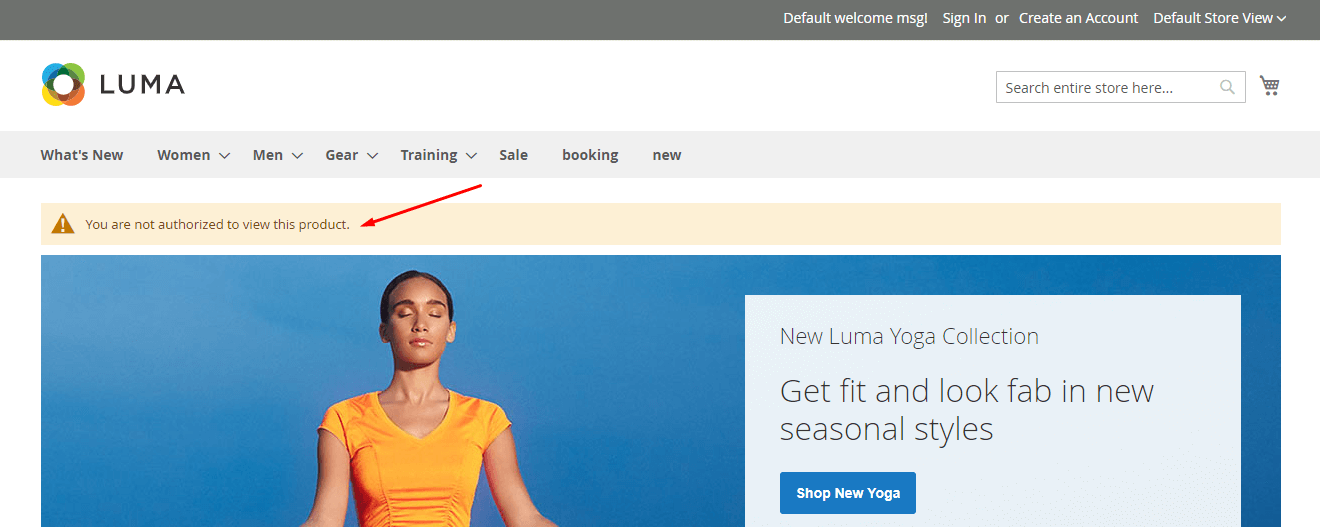

- #Magento 2 private cache update
- #Magento 2 private cache full
- #Magento 2 private cache code
If you use Mailchimp, Zuuba or Klaviyo, your server might be prepared to the dynamic URL that the systems will use to track the clicks. That said, why your email campaign is causing a performance issue? Every time that someone access a unique URL, a cache of this page is created for the next user.

Varnish is the cache system from the server-side. What if your website speed became very slow or even down every time you send email campaigns? Well, this is what I’m going to help you to solve today. You might use the Mailchimp module to integrate with Magento 2 or just upload a CSV list to your new email campaign. It's advisable to implement in order to offer speedy store to store users.The most common thing is to have Mailchimp campaigns to your Magento 2 store. Store admin may have requirements to clean and flush cache programmatically with-in Magento 2. Select one or all ‘Cache Type’you want to Refresh.This option does not affect processes or applications, it only cleans the cache that Magento uses. It might affect processing applications that run the same cache storage.Ĭache type cleaning deletes all items from enabled Magento cache types only. Deletes all enabled cache types from Magento 2, to which the disabled cache types are not cleaned.Notifications appear in the user interface temporarily.Įnable or disable cache types using SSH/FTPĭifference between cache clean and cache flush:.Customer Notification - customer_notification.Web services configuration - config_webservice.Integration APIs configuration of the Store’s Integrations compiled.Integration API configuration - config_integration_api.You need to 'clean' or 'flush' cache after changing or adding compiled integrations.Integration configuration - config_integration.Dependency between the Webapi module and the Customer module is removed.You should not need to 'clean' or 'flush' this cache type.
#Magento 2 private cache update
One way to update the database schema automatically:. After you make custom changes to the database schema you should 'clean' or 'flush' this cache type. When necessary, Magento will clean up this cache automatically, third-party developers can put any data in any segment of the cache. When it is necessary Magento cleans up the cache automatically, third-party developers can put any data in any segment of the cache. #Magento 2 private cache code
Clean or flush this cache type after modifying the code level that affects HTML output. Magento cleans up this cache automatically, 3rd-party developers can put any data in any segment of the cache.  'clean' or 'flush' this cache type after modifying the view layer. 'clean' or 'flush' this cache type after modifying any layout files. After modifying the configuration you should clean or flush this cache type. It contains the store-specific settings stored in the file system and database.
'clean' or 'flush' this cache type after modifying the view layer. 'clean' or 'flush' this cache type after modifying any layout files. After modifying the configuration you should clean or flush this cache type. It contains the store-specific settings stored in the file system and database.  Magento collects configuration from all the modules, it then merges it, and saves the merged results to the cache. The content is stored client-side and is specific to an individual customer. This content is stored server-side in reverse proxy cache storage. Magento can distinguish between two types of content Public Some Magento websites will generate dynamic and personalized “private” content which should only be served to a single user. Reverse proxies serve “public” or shared content to more than one user. Uncacheable in the layout using cacheable="false" To create an uncacheable page mark any block on that page as The entire page is uncacheable if the layout or block is uncacheable. These are terms that are used to indicate whether or not a page should be cached or not. A reverse proxy acts as a middle-man between visitors and the application in order to reduce server page load time.
Magento collects configuration from all the modules, it then merges it, and saves the merged results to the cache. The content is stored client-side and is specific to an individual customer. This content is stored server-side in reverse proxy cache storage. Magento can distinguish between two types of content Public Some Magento websites will generate dynamic and personalized “private” content which should only be served to a single user. Reverse proxies serve “public” or shared content to more than one user. Uncacheable in the layout using cacheable="false" To create an uncacheable page mark any block on that page as The entire page is uncacheable if the layout or block is uncacheable. These are terms that are used to indicate whether or not a page should be cached or not. A reverse proxy acts as a middle-man between visitors and the application in order to reduce server page load time. #Magento 2 private cache full
The page cache library contains a reverse PHP proxythat enables full page caching, which is available as an out-of-the-box enhancement in Magento 2. In the client-server model used by most web applications, there are two ways to cache content: This article will explain cache /caching types in Magento in more detail.Ĭaching is one of the best ways to improve a website’s performance. The use of cache technology can mitigate speed losses and in certain instances, can even speed up page loads. When developing Magento websites, performance begins to lag, with the slower page loading as more resources and more content is added to the site.








 0 kommentar(er)
0 kommentar(er)
